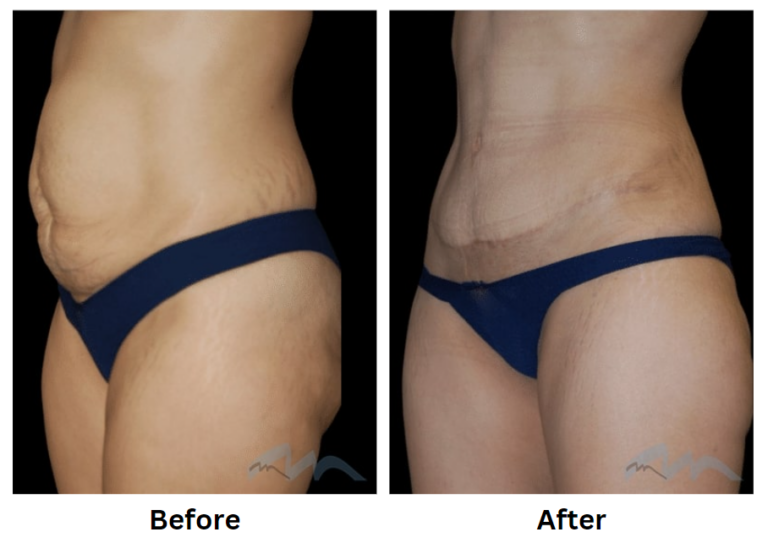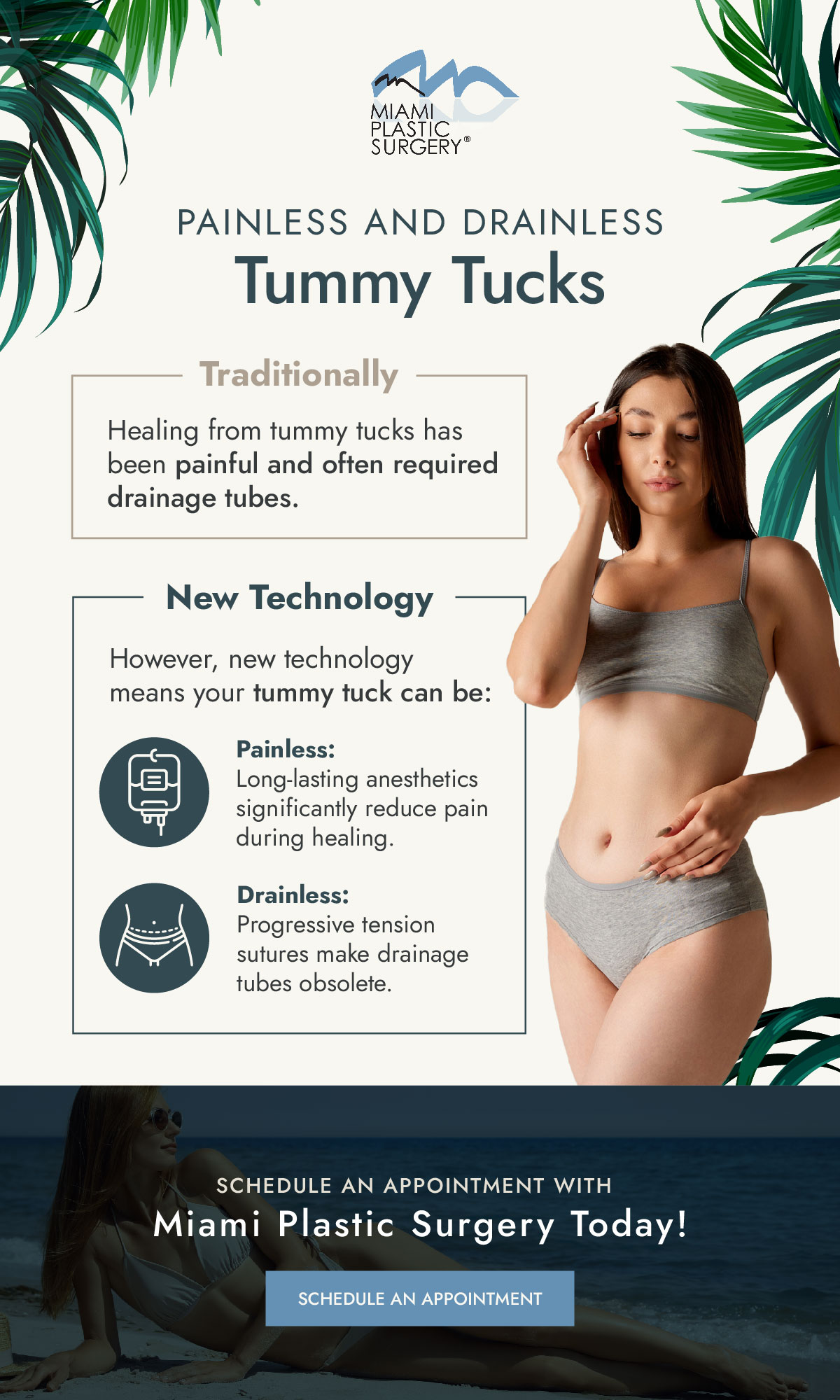“Dr. Polo, I want to have a tummy tuck but I’m afraid of the pain and the drain tubes. Is there any way to avoid these?”
Abdominoplasty, or tummy tuck, is consistently among the top 5 most common cosmetic surgeries. Still, many good candidates for tummy tuck surgery are deterred from undergoing the procedure, due to the common perception that this surgery is unavoidably associated with unbearable pain, and that use of uncomfortable drain tubes is mandatory. In today’s world, tummy tuck surgery can be performed with manageable pain and without drain tubes.
There are four main components of what I refer to as a full tummy tuck. These include liposuction to help contour the sides of the abdomen and the waistline; separation of the abdominal skin and fat layers from the underlying muscle, then stretching and removing the excess skin; suture repair of the separation of the abdominal muscles in the midline; and relocation of the belly button. Most of the post-operative pain is related to the muscle repair.
With pregnancies or obesity, increased abdominal content leads to permanent stretching of the fascia in the midline between the two rectus muscles. This diastasis results in bulging of the abdomen and loss of the curvature of the waist. During a tummy tuck procedure, the separated muscle edges are stitched back together, usually in multiple layers, to flatten the abdominal contour and improve the hourglass waistline. Traditionally following a tummy tuck, pain was treated only with oral analgesic medications. Recent medical advancements now allow delivery of long lasting local anesthetic drugs directly to the site of muscle repair. The two options for delivery of the local anesthetic are by direct injection of the muscle with lysosomal bupivacaine. This is a high-tech formulation of the drug, which is slowly released over 3-4 days. The second method, which is my preference, is placement of small catheters during surgery, through the skin and then beneath layers of muscle plicating sutures. The catheters attach to a pump filled with the long lasting local anesthetic drug, which is delivered automatically, at a continuous rate, over a 4–5-day period. This form of pain management allows for a decrease in the use of opioid medications, less nausea, earlier mobilization and ambulation, and a reduced risk of blood clots.

During an abdominoplasty, once the muscle repair has been completed and the excess skin resected, the remaining skin flap is stretched down to the low incision site and stitched closed. Traditionally, to prevent fluid accumulation, drain tubes are placed in the space between the skin and fat and the muscle. An advanced surgical technique known as “progressive tension sutures” was described several years ago and has now been adopted by many plastic surgeons, including myself. With this technique, the skin flap is tacked back down to the muscle with sutures placed at multiple key locations. In my experience, this technique not only precludes the use of uncomfortable drain tubes, but it also even more effectively closes the space. This reduces the accumulation of fluid, or seroma formation, which has been one of the more common complications after abdominoplasty.
If you have been considering tummy tuck surgery but have been hesitant due to fear of post-op pain and drains, consult with a surgeon, certified by The American Board of Plastic Surgery to discuss your options. Rest assured that recent advancements have allowed the procedure to be performed with much less discomfort and a more rapid recovery. Use of long-lasting local anesthetics and progressive tension sutures have not only made abdominoplasty surgery a more comfortable experience, but by reducing complications, they are also making the procedure safer.



